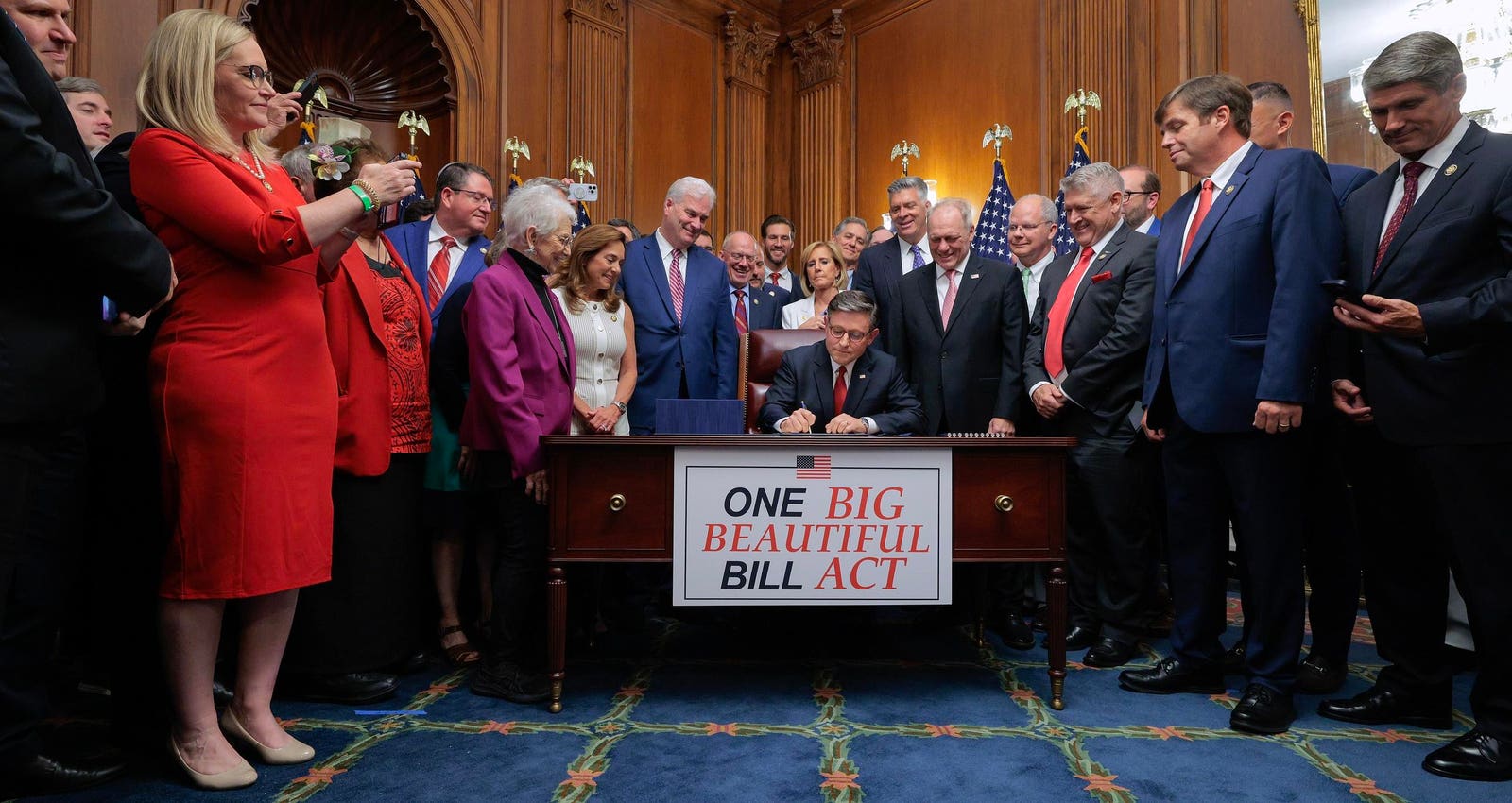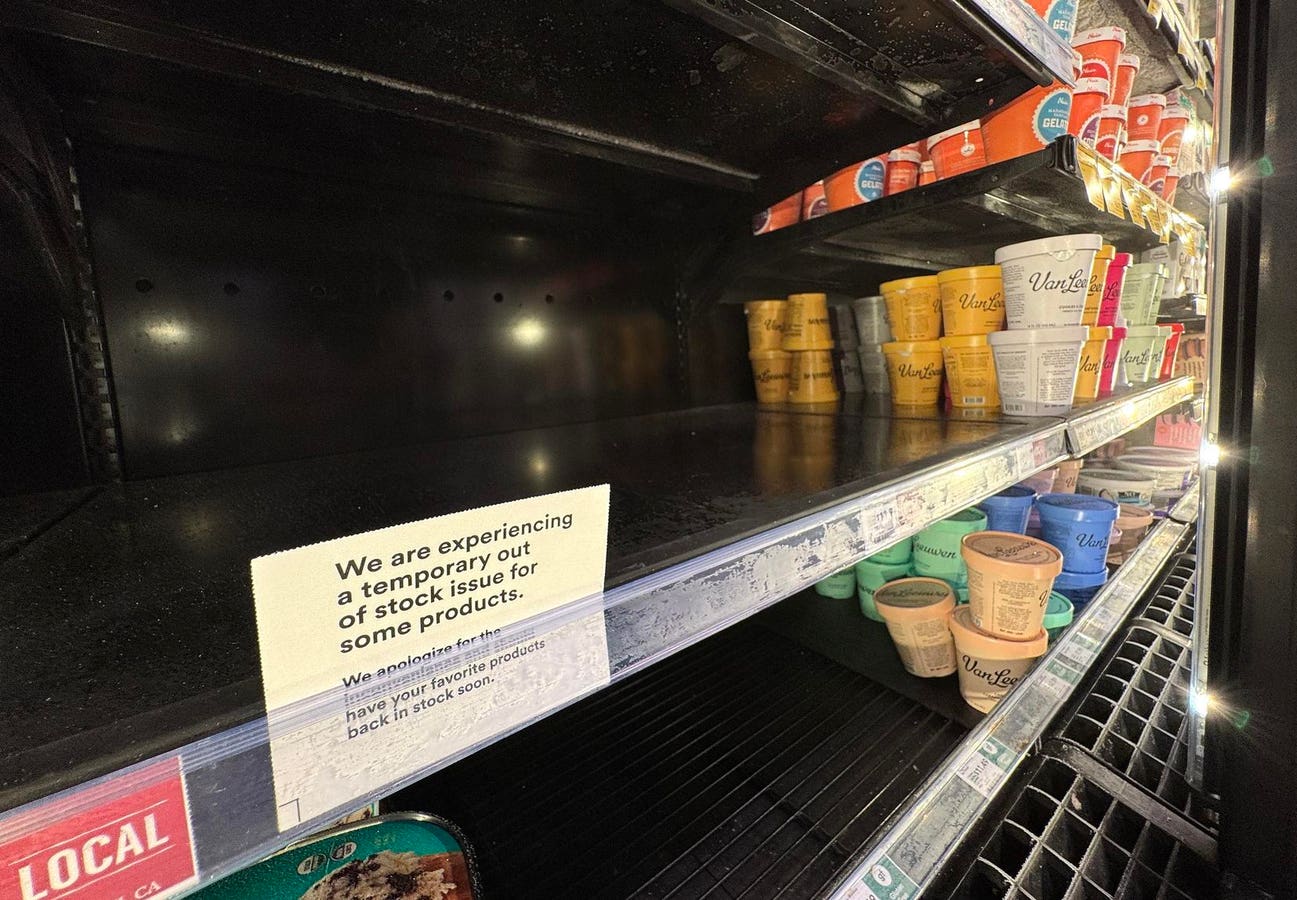WASHINGTON, DC – JULY 03: Speaker of the House Mike Johnson (R-LA) signs the One Big Beautiful Bill … More
The passage of the so-called “One Big Beautiful Bill” has triggered intense debate. Critics warn of devastating Medicaid cuts and uninsured patients flooding ERs. But behind the headlines lies a deeper question–what kind of healthcare system are we sustaining, and should we continue sustaining it?
The One Big Beautiful Bill reflects not just a political pivot but a structural reckoning. Instead of panicking over budget cuts, policymakers and industry leaders must confront the business model flaws that continue to undermine access, quality and sustainability.
For all the dramatic rhetoric–8-hour house floor speeches and dire headlines–what the One Big Beautiful Bill actually signals is a broad attempt to reorient federal safety-net programs, particularly Medicaid, toward something more limited in scope. That’s uncomfortable terrain for many, but it’s a conversation worth having.
Key provisions such as work requirements, eligibility redeterminations every six months, and reductions in state-directed payments all point toward a central tension: who should be covered, and under what circumstances?
As I noted in a recent column, Medicaid was never designed to be a universal coverage program. It was intended as a limited safety net. Over time, its scope has ballooned without corresponding improvements in efficiency or outcomes. The bill’s changes–while abrupt–are an attempt to recalibrate. Whether one agrees with the approach or not, it reflects growing unease with the assumption that more money and more enrollees necessarily equal better care.
It might be helpful to separate the rhetoric from the operational implications. What Congress is grappling with is not just budgetary, it’s structural. And until the country addresses this, meaningful reform will remain elusive.
One of the few provisions in the bill that received bipartisan support was the $50 billion rural hospital relief fund. While needed to stop the continued closing of rural facilities, this type of emergency infusion underscores a persistent problem: temporary financial lifelines often become permanent fixtures.
Rural hospitals are in crisis. Nearly half operate at a loss. Closures are accelerating. As I wrote in a May column, the collapse of rural healthcare isn’t just a public health issue, it’s a national security risk. Yet throwing more money at a failing model is not a long-term solution.
Instead of reflexively subsidizing every failing facility, we need to rethink delivery. A hub-and-spoke model that integrates pharmacies, local clinics and telehealth can offer sustainable access without the overhead of legacy infrastructure. Stop-gaps only make sense when they’re followed by structural change. Without that follow-through, they become another example of the system’s addiction to band-aid solutions.
That deeper structural tension helps explain the fierce response to the bill from the hospital industry. Hospitals are sounding the alarm over how funding cuts will lead to patient coverage losses and an increasingly vulnerable American public. But much of their concern, frankly, is with how cuts will affect their own bottom line.
As I explained in a June column, the anxiety isn’t just that funding is vanishing, it’s that revenue streams hospitals have grown dependent on are being reevaluated. That discomfort could prompt innovation, not panic and a desire to hold onto the status quo.
Many providers and advocates argue that coverage reductions are untenable because there “isn’t enough money” to care for everyone otherwise. But this assumes the system is already efficient. It isn’t. In my book Bringing Value to Healthcare, I estimated over $500 billion per year in waste. That estimate, rooted in data from 2016, has likely grown.
Whether it’s redundant testing, bloated administrative overhead or outdated processes–like nurses hand-counting inventory in high-end facilities–the system burns resources without accountability.
Rather than argue over how much the government can afford to spend on healthcare, we should ask how well we’re using what we already spend. The resources exist. What’s missing is accountability for how the dollars are spent.
The One Big Beautiful Bill has provoked outrage, applause and everything in between. But most commentary misses the forest for the trees. This isn’t just about Medicaid cuts or rural bailouts. It’s about a healthcare ecosystem on the brink: unsustainable, inefficient and increasingly unmoored from value.
The goal cannot be to preserve access at any cost. No country has unlimited resources. A better approach might be to create a system where cost and quality are linked, where dollars drive outcomes, and where providers are incentivized to do better, not just do more.
Stop-gaps won’t save us. Only a fundamental rethinking of the healthcare business model will. This bill, for all its flaws, opens the door to that conversation.









